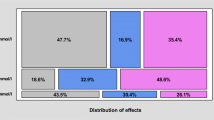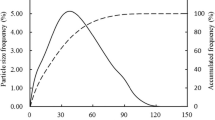Abstract
Drinking water containing environmental endocrine disruptor compounds (EDCs) endangers human health, and researching the purification process of drinking water for the effective removal of EDCs is vitally important. Filtering plays a crucial role in the bio-adsorption of EDCs, but the adsorption mechanism that occurs between the EDCs and filters remains unclear. In this study, a quartz crystal microbalance (QCM) was employed to elucidate the adsorption mechanism because QCM is a label-free method that possesses high selectivity, high stability, and high sensitivity. The results indicated that a pseudo-first-order kinetic model best fits the adsorption process of four different EDCs, which included bisphenol A (BPA), estrone (E1), estradiol (E2), and sulfamethoxazole (SMZ), on silica (quartz sand), a typical filter material surface. The order of the amount of individual EDCs absorbed on the silica surface was qE2 > qE1 > qSMZ > qBPA and related to their molecular structure, polarity, and chargeability. As the initial EDC concentration increased, the adsorbed amount of the four EDCs on the silica surface increased; however, the initial concentration had little effect on removal efficiency. The calculated Freundlich exponent (1/n) demonstrated SMZ and BPA showed a greater tendency for adsorption than E1 and E2. The mass response time on the surface of the silica gradually increased as the pH increased (from 5.5 to 8.5), indicating the adsorption rate was inhibited by the increase in pH. The addition of electrolytes shortened the mass response time of EDCs on the QCM chip. The pH and ionic strength produced no significant effects on adsorption because hydrophobicity was the primary contributor to adsorption. This study facilitated a better understanding of the interaction between EDCs and filters in water treatment.







Similar content being viewed by others
References
Aslanoglu M, Houlton A, Horrocks BR (1998) Functionalised monolayer for nucleic acid immobilisation on gold surfaces and metal complex binding studies. Analyst 123:753–757
Attili BS, Suleiman AA (1995) A piezoelectric immunosensor for the detection of cortisol. Anal Lett 28:2149–2159
Banihashemi B, Droste RL (2014) Sorption–desorption and biosorption of bisphenol A, triclosan, and 17α-ethinylestradiol to sewage sludge. Sci Total Environ 487:813–821
Benotti MJ, Trenholm RA, Vanderford BJ, Holady JC, Stanford BD, Snyder SA (2008) Pharmaceuticals and endocrine disrupting compounds in US drinking water. Environ Sci Technol 43:597–603
Bruchet A, Hochereau C, Picard C, Decottignies V, Rodrigues JM, Janex-Habibi ML (2005) Analysis of drugs and personal care products in French source and drinking waters: the analytical challenge and examples of application. Water Sci Technol 52:53–61
Campbell CG, Borglin SE, Green FB, Grayson A, Wozei E, Stringfellow WT (2006) Biologically directed environmental monitoring, fate, and transport of estrogenic endocrine disrupting compounds in water: a review. Chemosphere 65:1265–1280
Chessells M, Hawker DW, Connell DW (1991) Critical evaluation of the measurement of the 1-octanol/water partition coefficient of hydrophobic compounds. Chemosphere 22(12):1175–1190
Curie P (1880) Development by pressure of polar electricity in hemihedral crystals with inclined faces. Bulletin Soc Min de France 3:90–93
Delgado LF, Charles P, Glucina K, Morlay C (2012) QSAR-like models: a potential tool for the selection of PhACs and EDCs for monitoring purposes in drinking water treatment systems—a review. Water Res 46:6196–6209
Flemming I, Bent HS (2003) Evaluation of analytical chemical methods for detection of estrogens in the environment. Denmark
Huerta-Fontela M, Galceran MT, Ventura F (2011) Occurrence and removal of pharmaceuticals and hormones through drinking water treatment. Water Res 45:1432–1442
Ji L, Liu F, Xu Z, Zheng S, Zhu D (2010) Adsorption of pharmaceutical antibiotics on template-synthesized ordered micro- and mesoporous carbons. Environ Sci Technol 44(8):3116–3122
Jung C, Park J, Lim KH, Park S, Heo J, Her N, Oh J, Yun S, Yoon Y (2013) Adsorption of selected endocrine disrupting compounds and pharmaceuticals on activated biochars. J Hazard Mater 263:702–710
Kanazawa KK, Gordon JG (1985) Frequency of a quartz microbalance in contact with liquid. Anal Chem 57:1770–1771
Kleywegt S, Pileggi V, Yang P, Hao C, Zhao X, Rocks C, Thach S, Cheung P, Whitehead B (2011) Pharmaceuticals, hormones and bisphenol a in untreated source and finished drinking water in Ontario, Canada—occurrence and treatment efficiency. Sci Total Environ 409:1481–1488
Li JZ, Jiang L, Liu X, Lv JC (2013) Adsorption and aerobic biodegradation of four selected endocrine disrupting chemicals in soil-water system. Int Biodeterior Biodegradation 76:3–7
Linkel K, Boateng JH, Joseph RV (2013) Molecular level simulation of the adsorption of bisphenol a and 17a-ethinyl estradiol onto carbon nano materials. Separation and Purification Technology 116:471–478
Liu ZH, Kanio Y, Mizutani S (2009) Removal mechanisms for endocrine disrupting compounds (EDCs) in wastewater treatment—physical means, biodegradation, and chemical advanced oxidation: a review. Sci Total Environ 407:731–748
Nan C, Philip LC (2014) Sorption of carbamazepine by commercial graphene oxides: a comparative study with granular activated carbon and multiwalled carbon nanotubes. J Colloid Interface Sci 426:152–161
Nikolaou A, Meric S, Fatta D (2007) Occurrence patterns of pharmaceuticals in water and wastewater environments. Anal Bioanal Chem 387:1225–1234
Redding AM, Cannon FS, Snyder SA, Vanderford BJ (2009) A QSAR-like analysis of the adsorption of endocrine disrupting compounds, pharmaceuticals, and personal care products on modified activated carbons. Water Res 43:3849–3861
Sauerbrey G (1959) Verwendung von Schwingquarzen zur Wägung dünner Schichten und zur Mikrowägung. Z Phys 155:206–222
Tapiero H, Negdek D (2002) Estrogens and environmental estrogen-s. Biomed Pharmacother 56:36–44
Vakarelski IU, Mcnamee CE, Higashitani K (2007) Deposition of silica nanoparticles on a gold surface via a self-assembled monolayer of (3-mercaptopropyl) trimethoxysilane. Colloids Surf A Physicochem Eng Asp 295:16–20
Zhang YP, Zhou JL (2005) Removal of estrone and 17 beta-estradiol from water by adsorption. Water Res 39:3991–4003
Zhu D, Hyun S, Pignatello JJ, Lee LS (2004) Evidence for π–π electron donor–acceptor interactions between π-donor aromatic compounds and π-acceptor sites in soil organic matter through pH effects on sorption. Environ Sci Technol 38(16):4361–4368
Zi SG (1959) Use of quartz crystal vibrator for weighting thin films on a microbalance. Phys 99:7–8
Acknowledgments
This work was supported by the Science and Technology Plan Project of Yunnan Province (2018FD065) and the Youth Research Fund Project of Chongqing Jianzhu College (QN2018005).
Author information
Authors and Affiliations
Corresponding author
Additional information
Responsible editor: Tito Roberto Cadaval Jr
Publisher’s note
Springer Nature remains neutral with regard to jurisdictional claims in published maps and institutional affiliations.
Electronic supplementary material
ESM 1
(DOC 1435 kb)
Rights and permissions
About this article
Cite this article
Guo, JX., Pan, J., Wang, J. et al. Study of the adsorption of endocrine disruptor compounds on typical filter materials using a quartz crystal microbalance. Environ Sci Pollut Res 26, 20499–20509 (2019). https://doi.org/10.1007/s11356-019-05361-1
Received:
Accepted:
Published:
Issue Date:
DOI: https://doi.org/10.1007/s11356-019-05361-1




